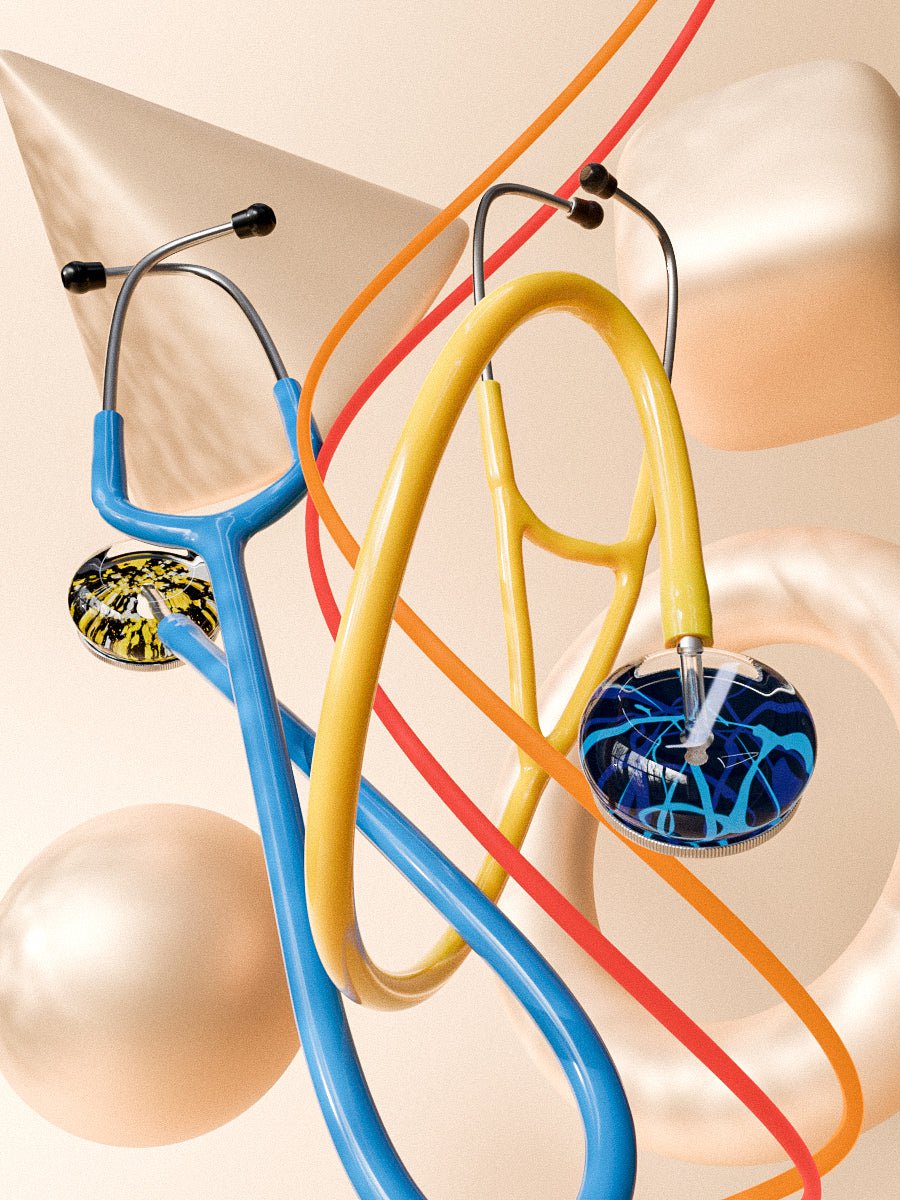A stethoscope is a medical diagnostic tool and a must-have acoustic medical device for medical practitioners, nurses, and nursing students. This equipment's role is well known considering that it is commonly used to read internal organs’ movements, a strategy that forms the basis of many disease detection.
Any equipment that is used in the medical field should not be faulty and should provide the most correct results regardless of the use it is put into. A stethoscope is not exempt and being a piece of diagnostic equipment, it means that even a small error in performance can result in a misdiagnosis that will, of course, lead to mistreatment- the last thing any patient would want happening to them. What’s more, this could even end up costing you a career!
In this post, we bring you an unrivaled stethoscope buying guide with all the factors you need to consider when you want to pick a good one.
Why is it important to be very strategic when choosing a stethoscope?
As mentioned above, the stethoscope’s vital role is the primary reason why you need to choose the right one. Additionally, you would want something that you are comfortable using and that produces the best results leading to high precision treatment. That’s not all, different stethoscopes are suitable to use for distinct scenarios and the strategic evaluation will help you pick one that perfectly matches your working needs.
Over the years, many stethoscopes have been made with every new release aiming to provide the best features to users for its specific purpose. There are, of course, brands that lead in the market as well as upcoming ones that will often struggle before people fully accept to use them. All in all, it all goes down to how reliable, practical, and effective a stethoscope is, as anyone purchasing this device looks to have the best experience using it.
If you are reading this, there is a chance that you may not know the main categories of stethoscopes and that is what we will look at before we explore top considerations when choosing a good one.
Main stethoscope types
There are three most common types of stethoscopes:
Acoustic
Acoustic stethoscopes are the basic and classic scopes that do not offer much in terms of the sound they pick up and relay. Their distinctive feature is the chest piece that is two-sided with two sound collection components. One side (usually the larger side) is a diaphragm used to record high-frequency sound and the other is a bell used for low-frequency sound collection due to its small surface area and low coverage.
Littmann
These are arguably the medical practitioners’ favorite stethoscopes. Littmann stethoscopes are built to pick up sound from a good range of frequencies and are both lightweight and comfortable to use. These stethoscopes work on a pressure-frequency basis that means that the pressure you apply on the patient’s body with the diaphragm determines the frequency of sound you will hear. You will hear low-frequency sounds on applying low pressure, while on applying high pressure, you will hear high-frequency sounds.
Electronic
Electronic scopes are high-tech and will pick up sounds of a vast range of frequencies. Most electronic stethoscopes are Bluetooth enabled and will offer great record-keeping ability in addition to the high precision sound recording. An important point to note, though, is that they come with a relatively higher price tag than the other stethoscopes. They are suitable for highly experienced medical professionals who conduct very delicate diagnoses daily.
So, what makes a good stethoscope?
These are the top factors you should be looking for in a good stethoscope:
Accuracy
The stethoscope's accuracy level is definitely the most important factor you need to consider before making a buying decision. A good stethoscope (regardless of the type) should be able to amplify sound and cancel outside noise to produce high-quality results. The most important component to check here is the tubing - ensure that it is thick and sturdy as this always translates to high accuracy in the sounds relayed to the ears.
Comfortability
A good stethoscope should be comfortable to wear. It is recommended to pick a stethoscope that comes with different sizes of ear tips (at least 3). The right scope should also be comfortable when used on a patient.
Affordability
A good stethoscope should come with a reasonable price tag while not compromising premium features and excellent functionality. You will only get the best deals after several comparisons for the type of stethoscope you need. Here, it would help if you avoided stethoscopes that come with price extremes.
Durable
You need to invest your money in a stethoscope that will last for a good number of years. The rule of thumb here is to pick a stethoscope with a premium finish (with at least stainless steel or titanium as the main material of the metallic components) and that is sturdy but at the same flexible enough. You can also check what past users are saying about its longevity. It will also help if you purchase a stethoscope that comes with a warranty and a return/refund policy.
Easy to clean
While this seems like an obvious consideration, many people tend to overlook it when they head out to purchase a stethoscope. Research shows that stethoscopes are easily contaminated by infectious bacteria, a reason you would want to settle for an easy-to-clean one. Here, it would also help if the stethoscope you buy is easy to disconnect and re-assemble for cleaning purposes.
Tips for buying a stethoscope
- Choose a stethoscope with a popping color and that seamlessly matches your brand.
- Purchase from a renowned site or a reliable retailer to get the best deal.
- Purchase the carrying case, too, as it will help keep your stethoscope clean and protected.
See, hear and feel how the stethoscope you are eyeing works
This is not one of that pieces of equipment that you will first purchase then test later. It would help if you interacted with it right from when you are in the medical supplies store by seeing, hearing, and feeling how it works. So what exactly does this mean?
See and examine the stethoscope’s components
A good stethoscope should have a symmetrical look with all components seamlessly joined. By holding the stethoscope by the headset, you can definitely tell if there are any imperfections in the stethoscope‘s components. You can, for example, check if there are any bends and kinks on the tubing and if the ear tubes are symmetrical. Only go for a stethoscope with no defects in its entire cross-section.
Hear how loud and clear the sound is
It is needless to say that a good stethoscope should produce high-quality sound that is not only loud but clear. You can test this by listening to your own heartbeats and make sure to test several of them and pick the one that relays or produces the best sounds. Don’t just go for a certain stethoscope brand just because it is highly hyped. Test it yourself and you will never go wrong with the decision you make.
Feel how the stethoscope is when worn
In a nutshell, a good stethoscope should feel light and comfortable when worn. The ear tip should specifically provide a nice seal to your ears and have no form of irritation at all. A stethoscope that feels cumbersome, irritating when worn, and hard to use should be avoided at all costs.
Conclusion
Hopefully, you now know the factors you need to consider when choosing this valuable medical assessment tool. Whether you are a nurse, doctor, or caregiver, you should take the initiative of selecting a practical, professional, and highly effective stethoscope for your diagnostic tasks.
Don’t settle for a poor-performing stethoscope when you can follow our guide and make the smart decision of choosing the best stethoscope you can afford. Before you make your final decision it's important to always see, hear and feel how it works to know if it is right for you.





